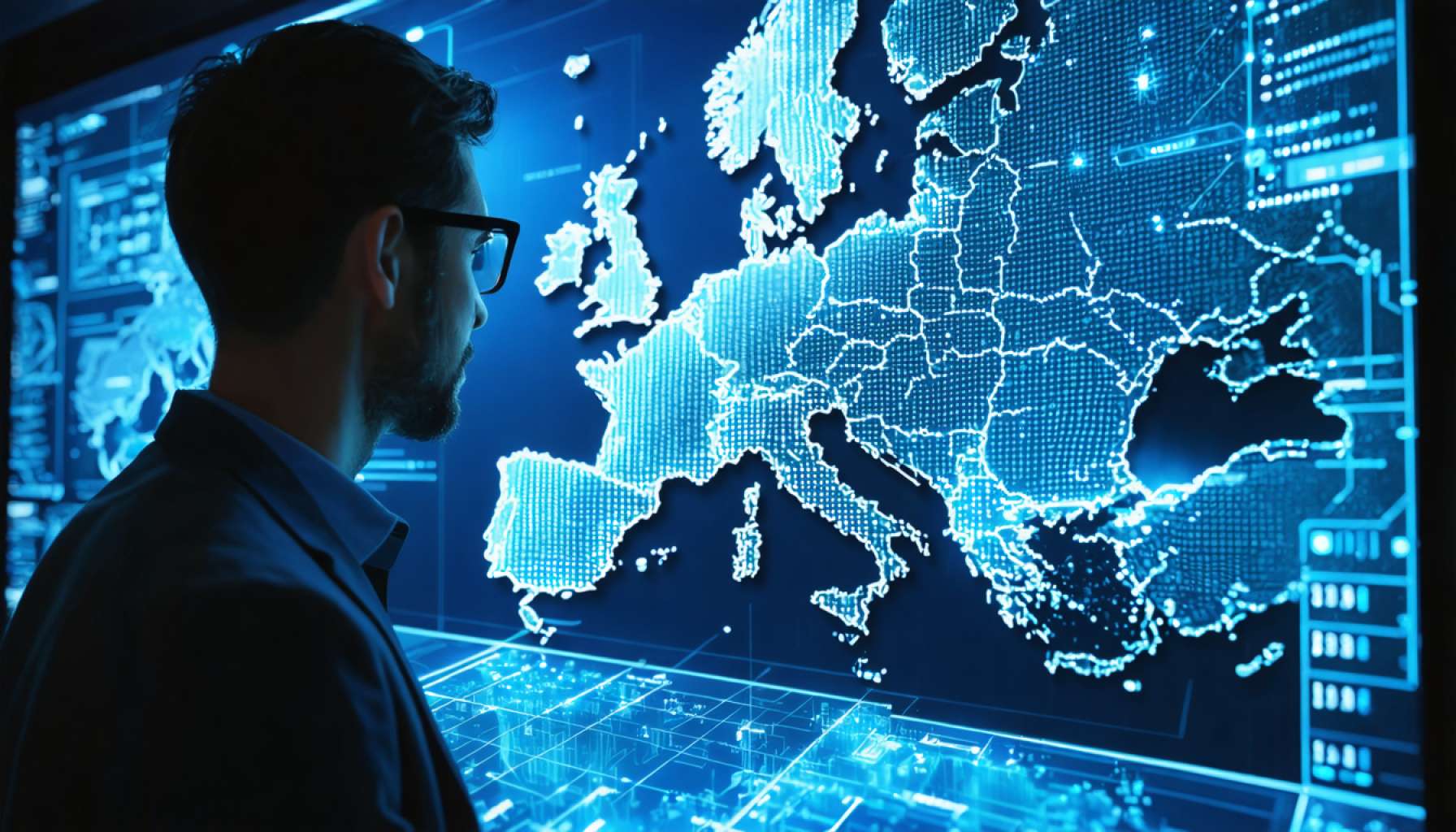- Europe is positioned at a digital crossroads, facing challenges of scale, regulation, and collaboration.
- Microsoft is committed to working with Europe, emphasizing partnership and strategic alliances for digital transformation.
- The focus extends beyond software to creating a resilient digital network across Europe, fostering trust and support.
- Key areas include cybersecurity, sustainable digital practices, and leveraging cloud computing, AI, and data analytics.
- Cooperation across borders is crucial, integrating innovation with Europe’s regulatory environments.
- Microsoft emphasizes collaboration, addressing Europe’s unique needs through tailored solutions.
- Progress requires commitment to shared values of privacy, security, and transparency.
- Europe’s digital evolution is a shared journey, with a focus on partnership and a brighter, collective future.
Europe stands at a digital crossroads, where technology and innovation meet challenges of scale, regulation, and collaboration. Microsoft’s bold proclamation offers a glimpse of a bright future for European technology—a future where partnership and strategic alliances anchor progress and transformation.
The stage is set as Microsoft’s President, Brad Smith, reveals the company’s commitment to work hand-in-hand with Europe. With a vision that extends beyond software and technical services, Smith illuminates a broader goal: fostering a resilient and integrated digital network across the continent. This vision is not just about increasing market share but establishing a legacy of trust and support in European ventures.
Under a deep azure sky that symbolizes limitless potential, Europe grapples with numerous tech challenges, from cybersecurity threats to sustainable digital practices. Microsoft aims to be at the center of Europe’s digital renaissance, offering tools, guidance, and expertise. As digital demands escalate, tapping into the power of cloud computing, artificial intelligence, and advanced data analytics becomes essential. Microsoft’s pledge underscores the importance of cooperation across borders, seamlessly blending innovation with Europe’s unique regulatory landscapes.
The story is more than corporate ambition; it’s an acknowledgment of shared responsibility. As digital landscapes become more entwined with everyday life, ensuring privacy, security, and transparency emerges as core pillars. Microsoft seeks not to dictate but to collaborate—listening and responding to Europe’s distinctive needs and ambitions, crafting tailored solutions that resonate with both local and global imperatives.
In this evolving narrative of innovation and trust, the takeaway is clear: meaningful progress demands more than cutting-edge technology; it requires commitment, understanding, and an unwavering dedication to shared values. As Europe navigates its digital horizon, Microsoft’s promise underscores an essential truth—a brighter future is forged together, in partnership and with a shared vision.
As the sun sets over a continent rich in history and possibility, the question remains no longer about capability but choice. Will Europe seize this collaborative opportunity to lead in the digital age? As the page turns to a new chapter of digital evolution, it seems the answer is yes—a hopeful and resolute yes.
Microsoft’s Vision for a Digitally Integrated Europe: Opportunities and Challenges
Europe’s Digital Transformation: Opportunities & Challenges
The partnership between Microsoft and Europe highlights key opportunities in Europe’s digital transformation. This includes harnessing technologies like cloud computing, artificial intelligence, and advanced data analytics. However, Europe faces challenges in large-scale digital adoption, stringent regulations, and maintaining cybersecurity. These aspects are crucial as the continent seeks digital competitiveness on a global scale.
Microsoft’s Role and Commitment
Microsoft has committed to aiding Europe’s digital ambitions by not only providing cutting-edge technologies but also fostering strategic alliances that prioritize trust and collaboration. This commitment is aligned with the European Commission’s Digital Compass, which aims for a digitally empowered Europe by 2030. Microsoft’s focus extends beyond just technological solutions to include building a resilient digital infrastructure that respects Europe’s regulatory environment.
Real-World Use Cases
1. Healthcare: Microsoft’s AI and machine learning technologies can significantly impact digital healthcare, from predictive diagnostics to managing healthcare records efficiently.
2. Smart Cities: Implementing AI and cloud solutions can enhance urban living by optimizing traffic management, energy consumption, and public safety.
3. Sustainable Practices: With Microsoft’s sustainability initiatives, European companies can reduce their carbon footprint through efficient resource management powered by Microsoft Azure.
Industry Trends and Forecasts
The demand for cloud computing services is projected to grow significantly in Europe, with a compound annual growth rate (CAGR) of around 23% by 2025. AI adoption is similarly expected to rise, facilitating automation and innovation across industries.
Security & Sustainability
Security: As cybersecurity threats become more sophisticated, Microsoft’s tools, including Azure Security and Active Directory, play a pivotal role in protecting digital assets.
Sustainability: Microsoft’s sustainability pledge includes a roadmap to become carbon negative by 2030, a goal that resonates with many European policies aimed at reducing environmental impact.
FAQs and Quick Tips
How can European businesses leverage Microsoft’s technologies effectively?
To effectively utilize Microsoft’s offerings, businesses should:
– Invest in training employees on the latest digital tools and platforms.
– Develop strategies that align technology use with business goals.
– Use Microsoft’s AI capabilities to streamline operations and enhance productivity.
What are the pros and cons of Microsoft’s European digital strategy?
– Pros:
– Strong alignment with EU regulations ensures compliance.
– Robust AI and cloud infrastructure supports scalable solutions.
– Commitment to sustainability aligns with European values.
– Cons:
– Heavy reliance on a single provider could pose risks if disruptions occur.
– High costs associated with transitioning to new IT infrastructure.
Actionable Recommendations
– For Businesses: Evaluate current digital infrastructures and explore potential enhancements through Microsoft’s technologies. Engage in partnerships that provide technical support and strategic insights.
– For Policymakers: Encourage an open dialogue with technology partners like Microsoft to ensure that digital solutions are tailored effectively to local needs and regulatory frameworks.
For more information, explore Microsoft and European Commission websites for official insights and developments.
Microsoft’s collaborative approach presents an opportunity for Europe to advance its digital landscape, ensuring a future where technology not only supports but transforms its societal and economic fabric.
